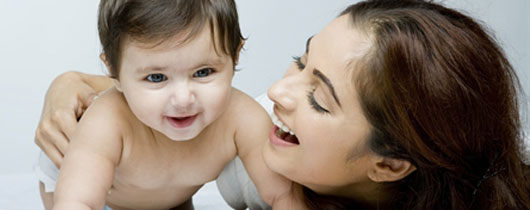The birth canal
The birth canal extends from the inlet brim of the pelvis to the pelvic outlet. Its direction changes through one complete right angle as it travels through the pelvic cavity, the symphysis pubis being very short and the sacrum long, and it necessarily follows that the baby himself has to turn through a right angle as he passes through the pelvic cavity during labour. If the pelvic brim were at angles to the mother's spine, so that the baby could fall directly downwards out of the abdomen, it would mean that the support of the pelvic floor would be very inefficient, whereas the mechanism of having the pelvic brim tilted on the spine ensures that all the contents of the abdomen do not drop straight out as if through a trap door when the baby is delivered.
The pelvic floor

The pelvic floor consists of a layer of muscle and fibrous tissue, which extends across the lower part of the bony pelvis from the lower edge of the symphysis pubis to the tip of the sacrum. It is a complicated and important structure permitting the passage of urine and feces and is perforated in front by the urethra leading down from the bladder, and behind by the rectum and anal canal. The vagina perforates the pelvic floor at approximately its midpoint. It would be difficult to design a man-made structure to be perforated by the urethra, vagina and rectum and yet to be strong enough to prevent all the abdomen organs from falling out of the bottom of the pelvis. It must also be remembered that the pressure within the abdomen, and therefore pelvic floor, increases to quite an extraordinary degree during coughing or sneezing, as well as during exercise and especially when straining to open the bowels.
The main structure of the pelvic floor is pair of muscles called the levator ani. These stretch from each sidewall of the pelvis, joining together in midline to form a type of hammock or sling across the pelvic outlet, and are supported by layers of fibrous tissue both above and below. During the actions of coughing and sneezing the levator ani muscles actually contract thus give a special support to the pelvic outlet. The fact that these muscles can relax in order to allow the baby to pass through the pelvis is truly remarkable. As the baby's head passes through the pelvic floor the levator ani muscles and their associated fascia are folded sideways against the walls of the pelvis and, providing they are not badly damaged, they will rapidly return to their normal and natural state after delivery. Postnatal exercises are, however, most important in restoring the tone and strength of the muscles.
The vulva

The external genitalia are collectively known as the vulva which consists of the labia majora, the labia minora, and clitoris, together with the perineum behind and the pubic pad of fat covered by pubic hair in front. The labia majora, forming the major protection to the vaginal entrance, contain fat and are covered by normal skin containing both hair follicles and sweat glands. The labia minora are folds of delicate, sensitive skin at the junction of the labia minora. It is small cylindrical-shaped organ approximately half an inch in length, at the end of which is situated the highly sensitive glans rendering it the most delicate and sensitive part of the vulva. Being composed almost entirely of erectile tissue, similar to the penis, it becomes engorged and swollen under the stimulus of sexual excitement. The glans is normally covered by a fold of protective skin which can be retracted to expose it. The clitoris is the female's most erotic organ and it has no function except enhance the woman's sexual excitement and response.
The perineum
The perineum is the triangular area of skin between the back of the vagina and the front of the rectum or anal canal. The importance of the perineum is not the actual skin but the muscles and fibrous tissue that lie beneath the skin. These are known as the perineal muscles and they extend from each side of the pelvis to join together in the midline. The muscles vary in strength from person and under normal circumstance they strengthen the posterior wall of the vagina and close the vaginal entrance, giving support to the vagina and the pelvic floor.
The perineum is stretched and may be injured, damaged or torn during the delivery of a baby. To avoid this tearing, or perineal laceration, an incision may be made in the perineum to enlarge the vaginal entrance during delivery. This is known as episiotomy. Any tear or incision in the perineum is repaired immediately after delivery.

